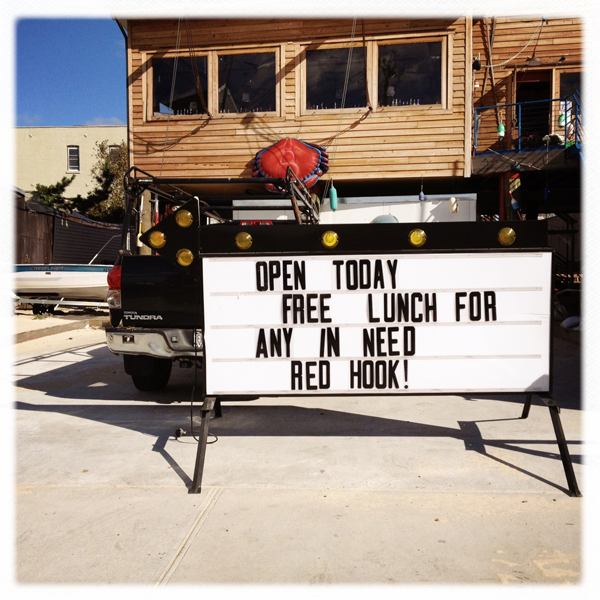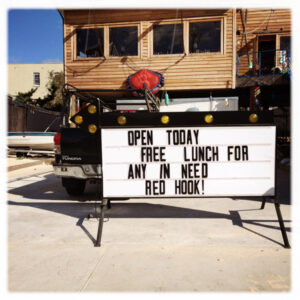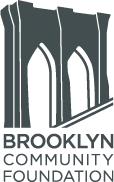Brooklyn Community Foundation’s Marilyn Gelber: How Brooklyn Came Together After Superstorm Sandy
This is the third in a six-part series about long-term recovery from Superstorm Sandy. In it, Marilyn Gelber, President of the Brooklyn Community Foundation, shares her thoughts. Brooklyn, for all its notoriety as a hipster haven and center of urban cool, is a waterfront community. More than 700,000 people—nearly a third of the total population—live […]

This is the third in a six-part series about long-term recovery from Superstorm Sandy. In it, Marilyn Gelber, President of the Brooklyn Community Foundation, shares her thoughts.

Brooklyn, for all its notoriety as a hipster haven and center of urban cool, is a waterfront community. More than 700,000 people—nearly a third of the total population—live along its 65-mile coastline. Skinny jeans are rare sites in many of these neighborhoods, where boats outnumber fixed gear bikes, and Fuhgettaboutit is still a common phrase. Most residents are working class, many are new immigrants, and almost none were prepared for the hurricane that was to come last fall.
Brooklyn was at the center of Superstorm Sandy’s assault on New York City. Zip code 11235—encompassing Sheepshead Bay and Manhattan Beach—had more FEMA applicants than any other in the city. In total, more than 115,000 Brooklyn homes and businesses suffered damage.
Yet for such a large, diverse place, on the morning of October 30th, the people of Brooklyn became one.
As volunteers, unaffected Brooklynites collected supplies, cooked hot meals, began mucking out basements, and brought comfort to those stranded without electricity and heat.
As donors, many turned to us at the Brooklyn Community Foundation to ensure that their financial support would stay in the borough to help their neighbors recover.
Last October, we were marking the third anniversary of our transition from the private Independence Community Bank Foundation, serving the metro area, into the first-ever community foundation for Brooklyn. In that short time, we had awarded over $15 million to community-based nonprofit organizations and were steadily becoming a resource for Brooklynites to engage with and give back to their communities.
When Sandy hit Brooklyn, and the daylight revealed unprecedented damage, it was clear to us that the community foundation had enormous responsibility for what happened next.
We felt it important to respond in partnership with local government and the business community, and within a matter of days, we launched the Brooklyn Recovery Fund with the Office of the Brooklyn Borough President and the Brooklyn Chamber of Commerce. Every donation we received would stay in Brooklyn and be channeled through local nonprofits for relief, rebuilding, and the long-term challenges of a full recovery.
We began to raise money from major Brooklyn business interests like the Brooklyn Nets and Barclays Center, and from other foundations and individuals with ties to the borough. Over $2 million poured in within the first month from thousands of donors, and we were able to disburse more than $600,000 to 40 local organizations within the first weeks.
We set up two types of grants: “Emergency Fast Track” grants averaging $10,000 for immediate needs, and “Community-wide Collaborative” grants of $100,000 to help establish and support the efforts of nonprofit coalitions working together across sectors to serve a neighborhood.
By February, we had awarded an additional $1,345,000 through a second round of grants for “Community Rebuilding,” to address the issue of mold and to expedite rebuilding and rehabilitation in five hard-hit communities: Red Hook, Canarsie, Coney Island, Gerritsen Beach, and Sheepshead Bay.
Seven months after Sandy, with nearly $2.3 million awarded through the Brooklyn Recovery Fund, we continue to work with our partners in recovery on every level—from city, state, and federal officials to neighborhood civic associations. Our role in Brooklyn’s rebound has eclipsed sheer grantmaking. We are building communities. Where networks previously did not exist, now nonprofits, residents, small businesses, and volunteers have come together to create coordinated responses and form strategic plans for neighborhood-wide reconstruction.
And with a just-announced $1.25 million grant from the American Red Cross, we will be able to continue these efforts in a bigger way.
Make no mistake—Sandy was devastating to the people of Brooklyn. But it also taught us many lessons and has helped make our communities stronger. Through the storm, more of us have become volunteers, leaders, and donors.
The compassion and unguarded generosity of Brooklynites proved that, when it counts, there really is one Brooklyn—and it is a force to be reckoned with.
Doubt it? Fuhgettaboutit!
More like this
Trip Northeast Reveals Unanswered Questions, Key Lessons

